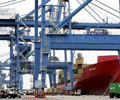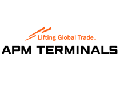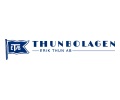MABUX: Bunker market this morning, Apr.03

MABUX World Bunker Index (consists of a range of prices for 380 HSFO, VLSFO and MGO (Gasoil) in the main world hubs) continued slight downward movement on Apr.02:
380 HSFO – USD/MT – 241.01 (-0.29)
VLSFO – USD/MT – 298.00 (-3.00)
MGO – USD/MT – 385.95 (-5.57)
Meantime, world oil indexes rose on Apr.02 after U.S. President Donald Trump said he expected Saudi Arabia and Russia to reach a deal soon to end their oil price war.
Brent for June settlement increased by $5.20 to $29.94 a barrel on the London-based ICE Futures Europe exchange. West Texas Intermediate for May rose by $5.01 to $25.32 a barrel on the New York Mercantile Exchange. The Brent benchmark traded at the premium of $4.62 to WTI. Gasoil for April delivery gained $4.25.
Today morning global oil indexes have turned into downward evolution again.
Trump said he had talked recently with the leaders of both Russia and Saudi Arabia and believed the two countries would make a deal to end their price war within a “few days” – lowering production and bringing prices back up. Russia in turn said that no one has launched any talks about a potential new oil-production deal to replace the OPEC+ format. The current prices of Brent Crude in the mid-$20s are well below Saudi Arabia’s fiscal break-even price of $80 a barrel oil, below the break-evens of nearly all U.S. shale production, and below the Russian breakeven price, too. With markets facing 15 million barrels per day (bpd) of oversupply in the second quarter and storage maxing out in April, extraordinary curtailments of oil supply will be needed in May and Jun.
The double supply-demand shock of the past month threw the oil futures market into super contango. One of the most requested commodities right now is storage—be it onshore or offshore—as commodity traders and oil majors are increasingly looking to profit from the super contango in several months’ time. Apart from the traders who manage to secure storages, the other big winners of the super contango market structure are set to be tanker owners and operators, as rates for chartering tankers for storage are soaring. Over the next few months, the tanker companies will be the biggest winners from the double market shock as traders rush to secure what’s left of available crude carriers for storage in the super contango structure.
U.S. oil producers may soon have access to federal oil storage space to alleviate the glut that is threatening to overwhelm existing private storage capacity. The Energy Department is considering the option, and an official announcement could come later. The storage problem is becoming critical on a global scale. As per some forecasts, if storage continues to fill up, oil prices could fall close to zero. This zero-space available could happen in months, if not weeks. The U.S. strategic petroleum reserve (SPR) has a maximum capacity of over 713 million barrels of crude. The U.S. created the SPR in the wake of the Arab oil embargo following the 1973 Arab-Israeli war, as the U.S. sought to avoid a repeat of the fuel shortages that the embargo caused at the time. There U.S. has some 635 million barrels in storage across the SPR facilities.
China is moving forward with plans to buy up oil for its emergency reserves after price crash. Beijing has asked government agencies to quickly coordinate filling tanks and using financial tools like options to lock in current low prices. In addition to state-owned reserves, Beijing may use commercial space for storage as well, while also encouraging companies to fill their own tanks. The initial target is to hold government stockpiles equivalent to 90 days of net imports, which could eventually be expanded to as much as 180 days when including commercial reserves. China is also planning to announce the fourth batch of strategic reserve sites. The expansion project has the dual advantage of creating larger emergency reserves and as an economic stimulus project to spur construction opportunities as the country recovers from the coronavirus.
Indian Oil Corp (IOC), the country’s biggest refiner and fuel retailer, has declared a force majeure on oil imports from some of its top oil suppliers, including four key suppliers from Middle East: Saudi Arabia, Kuwait, Iraq, and the United Arab Emirates (UAE). It’s not only India that is not rushing to buy ultra-cheap Saudi crude because of plunging demand: some refiners in Europe, including supermajor Shell, are set to take less crude from the Kingdom in April amid plummeting demand in the coronavirus pandemic.
In the meantime, Saudi Arabia and the UAE are still pretending to flood European and Asian markets with crude. The Kingdom’s supply has now officially surpassed the 12 million bpd mark, compared to 9.7 million bpd. While some analysts remain doubtful that the kingdom is able to produce anywhere close to 12 million bpd, Riyadh is already resorting to drawing crude from its inventories to boost exports, and Saudi authorities have instructed Aramco to ramp up supply to 13 million bpd. UAE has also vowed to increase production to 4 million bpd, one million barrels per day higher than it produced under the OPEC+ output deal. Iraq also said on Mar.31 that it would raise production by 200,000 bpd to 4.8 million bpd.
We expect bunker prices may rise today in a range of plus $ 15-25 for IFO and plus $ 3-15 for MGO. At the end of the session, a downtrend may resume.
Source: MABUX

 Hellenic Shipping News Worldwide Hellenic Shipping News Worldwide, Online Daily Newspaper on Hellenic and International Shipping
Hellenic Shipping News Worldwide Hellenic Shipping News Worldwide, Online Daily Newspaper on Hellenic and International Shipping





















 PG-Software
PG-Software